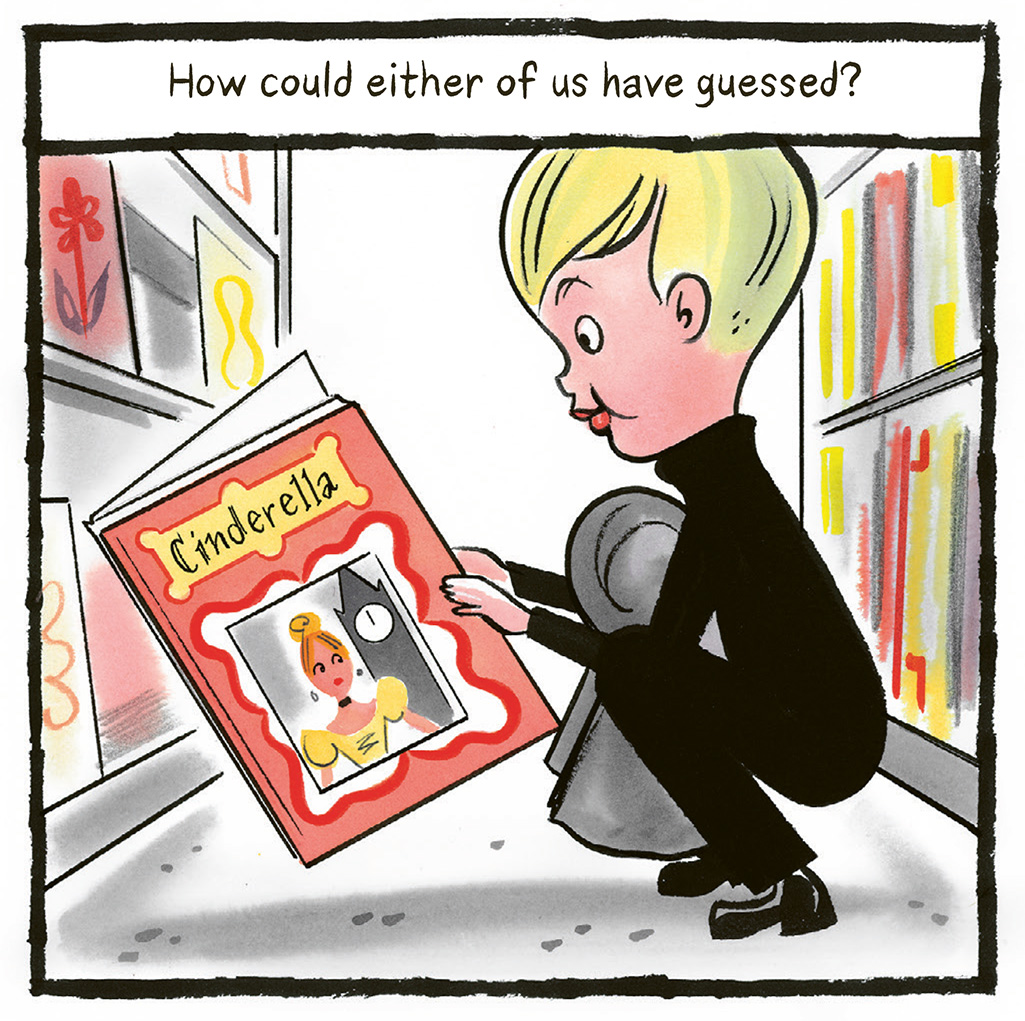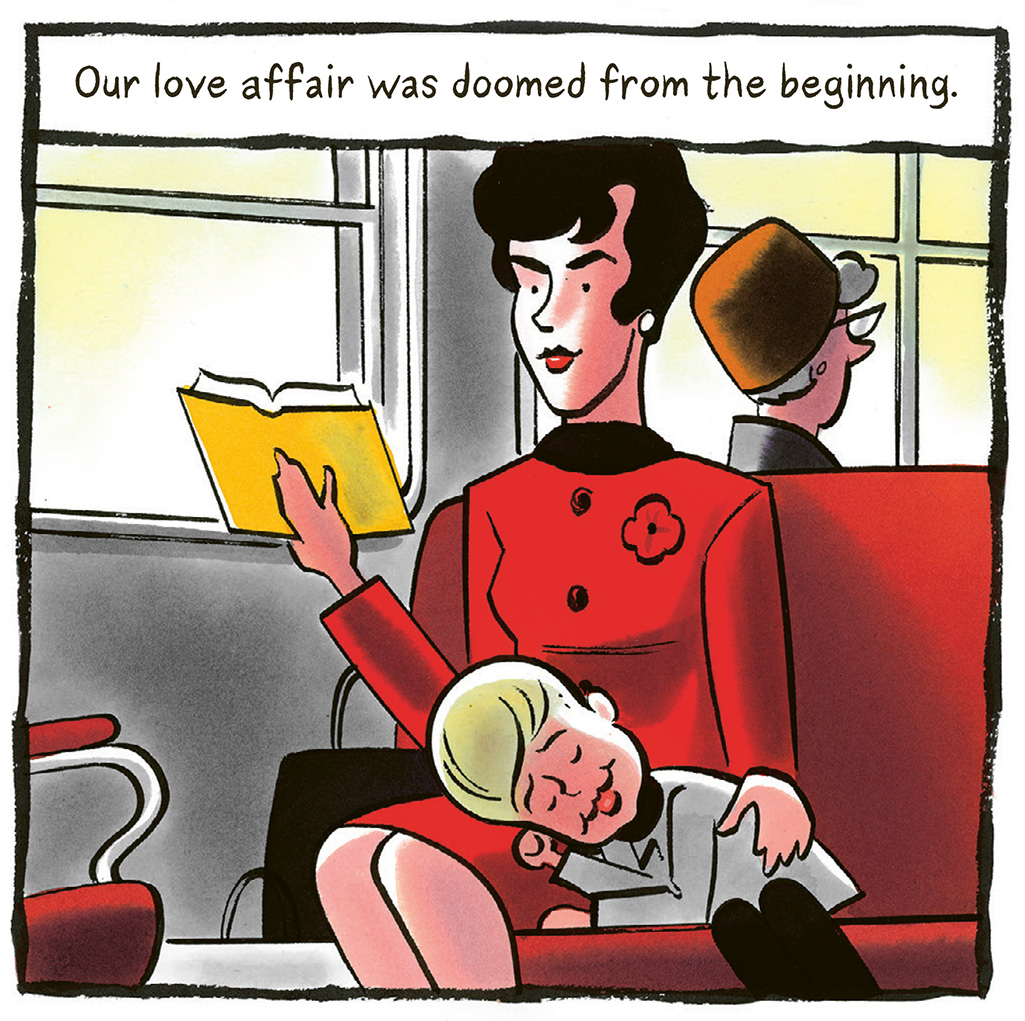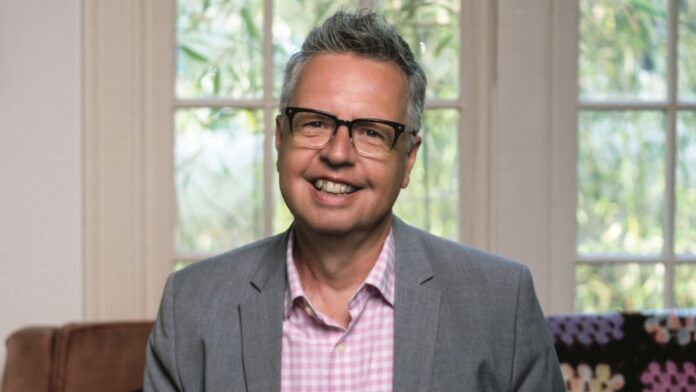LGBTQ+ graphic (as in illustrated) memoirs are nothing new. But it took Alison Bechdel’s award-winning 2006 book “Fun Home,” to bring the genre to mainstream audiences, thereby generating mass public appeal and appreciation. Since then, books such as Maia Kobabe’s “Gender Queer” and Alice Oseman’s graphic novel “Heartstopper” have brought increased attention to both nonfiction and fiction LGBTQ+ works. Maurice Vellekoop’s marvelous graphic memoir “I’m So Glad We Had This Time Together” (Pantheon, 2024), out in February, is a perfect addition to the genre. A powerfully rendered personal story of growing up in a religiously conservative home in Canada, being the artistic one in a straitlaced family, finding necessary creative outlets for expression and, eventually, self-acceptance. Maurice was generous enough to make time for an interview in advance of his book’s publication.
Maurice, I first became aware of your work with your fabulous 1997 homoerotic primer, “Maurice Vellekoop’s ABC Book,” which you wrote about in the “Deep Magic” chapter of your new graphic memoir “I’m So Glad We Had This Time Together.” Please say a few words about the “ABC Book” for the readers.
The “ABC Book” pictures a series of homoerotic encounters between various gay stereotypes, arranged alphabetically with very simple rhyming text. For example, “E is for Executives reaching their goals, F is for Firemen sliding down poles.” It’s a naughty riff on Little Golden Books but for an adult audience. It was inspired by the subversive work of both Edward Gorey and the great homoerotic artist Tom of Finland, who is such an inspiration. Tom’s world, much as I love it, is relentlessly macho. I wanted my playful vision of gay sex to be more inclusive, so, in addition to all the bikers and cops, I drew some hairdressers and interior decorators having hot sex too!
In the memoir, you also wrote about the early influence of Charles Schulz and Walt Disney on your imagination and your work. Were there graphic novelists, such as Alison Bechdel or Marjane Satrapi, who also influenced you and how you approached “I’m So Glad We Had This Time Together”?
In my career as a magazine illustrator, I’ve drawn inspiration from a wide variety of sources. One artist I love is Arthur Getz, who did “New Yorker” covers from the 1940s to the 1970s. His sense of light and mood is something I’m always striving to emulate. In the world of comics, yes, definitely Bechdel; less so Satrapi, much as I revere her. Legendary Canadian comics artist Seth is a big influence. I love his book, “It’s a Good Life if You Don’t Weaken.” I borrowed the page design and layout of “I’m So Glad We Had This Time Together” from it.

In the “Bewitched” chapter, you wrote about wanting a Barbie doll when you were a boy. You also wrote in the book about your love of movies. Have you seen the Greta Gerwig “Barbie” movie, and if so, what did you think of it?
I enjoyed Barbie very much! Sorry, I can’t really add much further to the discourse.
TV also played a role in your formative years. Do you know if Carol Burnett is aware of your drawings of her and that she’s in your book?
Good question! I’ll have to get the publisher to send her a copy. I met her very briefly in New York in the 1990s. Bob Mackie, who famously designed every single costume for her weekly variety show, was having a retrospective at FIT, so I knew Carol would be there for the opening night. At the entrance I spotted her, and, blushing like a twelve-year-old, handed her a copy of my book “Vellevision,” pointing out there was a drawing of her on the cover. She flashed that dazzling smile, said thanks, handed the book to her assistant, and went in.
You had a conservative religious upbringing, which of course has an impact when you realize that you are gay. While writing the book, were you consciously writing to a reader who also had a similar experience, and if so, what do you hope they will get out of reading your book?
I was not necessarily writing for that specific audience, though I certainly thought about it. When I read, it’s to discover stories that don’t necessarily reflect my own experience. I grew up in an unusual, hermetic world of devout Protestant Dutch immigrants and I thought my book could, in part, be a glimpse into that world. Having said all that, if my book can offer solace or help someone struggling through a similar circumstance, that would be amazing!
In the “Thistletown” chapter, you wrote about how you and your sister Ingrid came out to each other. When you think about that experience today, having a queer sibling with whom to share the coming out experience, how does it make you feel?
It meant the world to me to have an ally I could confide in safely at fourteen. Ingrid and I were very tight in my teens and twenties, and her artistic talent was a constant inspiration. I feel very blessed to have her in my life. And that passage is one of my favorites in the book, especially when the waitress says, “What can I get you girls?”
Like a lot of gay teens, you found a safe haven in your high school’s theater department. Are you still in touch with any friends from that time, and did any others also come out?
No, I’m not in touch with friends from high school. But I recently reconnected with an art school buddy who I always wondered about. He recently came out — in his late fifties — and is happily partnered. It’s never too late!
In the “Vissi D’Arte” chapter, there is a drawing of you reading “A Boy’s Own Story.” Does Ed White know he’s in your book?
[Laughs] I will have to send him a copy too! I am a big fan of Edmund White, but at the period referred to in the book, the late eighties, he seemed to represent a trend toward a very heavy, bleak, and cerebral gay literature that was not exactly fun to read.
What do you think your parents, who are both deceased, would think of “I’m So Glad We Had This Time Together”?
What my dad would have thought is anyone’s guess. He was such an unusual, unpredictable creature. I’m sure he would have been proud of the accomplishment, whatever his feelings about his own portrayal. My mother was really dreading the book. She was a very private person, and the book represents a huge invasion of that privacy. Also, though she was quite literary, all the books she loved were written long ago, and she just would not understand the level of candor that modern readers expect from a memoir. Despite her dread, she was unfailingly supportive of the project, always ready to answer my questions, even when what I was asking was quite intimate.

You wrote openly about your struggle with depression, often depicting two imaginary beings representing a kind of good and evil duo. You were fortunate to find Maggie, the right therapist for you. Regarding the book’s title, would it be fair to say that some of the most productive “time together” was actually what you spent with therapist Maggie?
The title can be read a number of ways, some of them ironic, so that’s an interesting take. I never thought about it in quite that way, but now that you raise it, yes, absolutely. I was so fortunate to have found someone so wise, funny, pragmatic and kind. Nowadays, therapy is so much more accepted than it was 25 years ago. But if there are readers who are curious but skeptical, I hope my book illustrates how therapy can work to produce profound change.
One of the things that I loved about the book was the visual history of your hair throughout the book. In the “God’s Temples” chapter, you even mention that the hair on your head darkened when you turned 13. Please say something about the part, pardon the pun, your hair has played in your life.
I was lucky to have inherited my hairdresser mother’s thick, luxuriant hair (in her case dark brown, in mine, white-blond in childhood, later a duller gold, now mostly silver). There was a long period in the 1990s when I had a sort of 1970s shag. I looked a bit like the singer Beck, and I used to get a lot of puzzled stares from people wondering, “Is it him?”. However, cool as I thought I looked, this look did not go over well in the gay bars of Toronto, where a rigid conformity prevailed. Eventually, I cut it off and have had a kind of Tintin-esque coif ever since.
Earlier I mentioned Bechdel and Satrapi, whose graphic memoirs were turned into a Broadway musical and a movie, respectively. What would it mean to you if “I’m So Glad We Had This Time Together” was adapted for another medium?
It would be amazing if somehow Disney decided it was time to do an animated film for adults, based on my memoir. Especially if they could recreate the loose, sketchy style of “101 Dalmatians” and “Jungle Book,” my favorite period.
Have you started working on or thinking about your next book project?
Yes! My book agent and I are pitching a children’s book written and illustrated by me. I’m also working on some new erotic drawings, which may end up as a book. For lots of reasons, as a young man, I didn’t think I was attractive, and I spent many years in celibacy. Now, when I look at old pictures of myself, I see a pretty, rosy-cheeked, full-lipped twink. So, I’m drawing that character getting all the wild sex he so desperately wanted but couldn’t allow himself to have. I can’t decide whether the project is terribly sad or crazily empowering, maybe it’s a bit of both!

